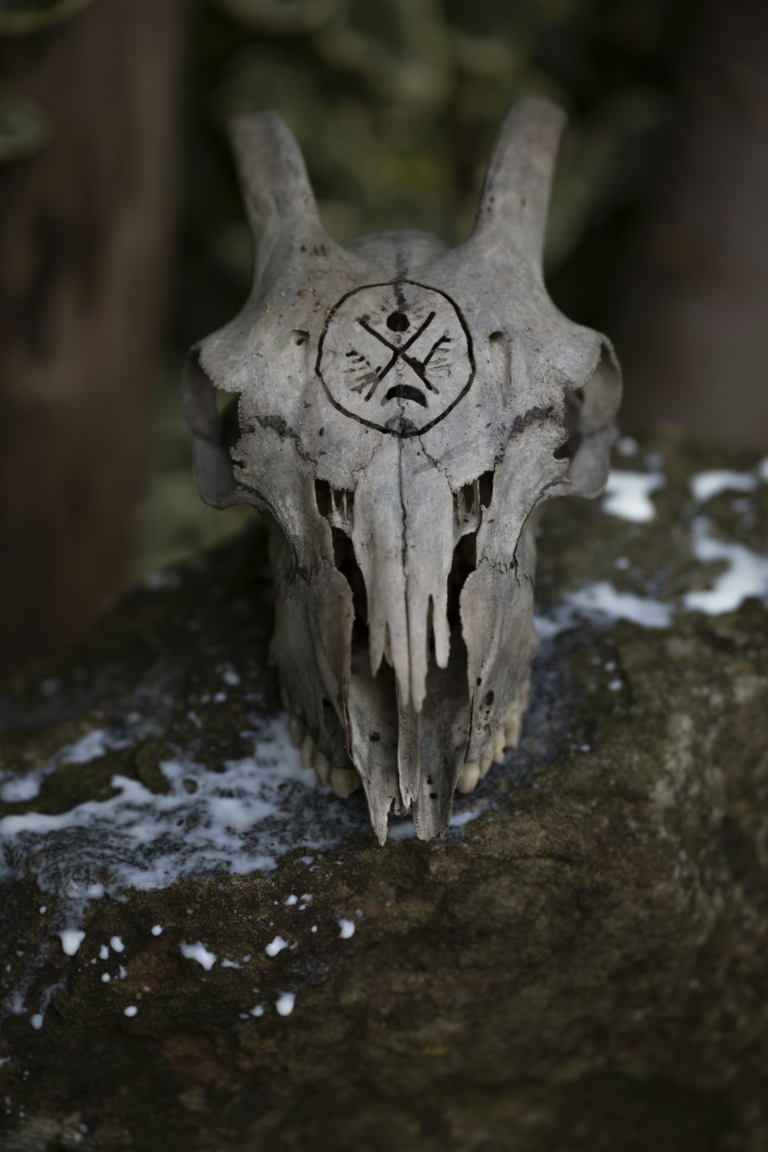
Newsletter Subscribe
Enter your email address below and subscribe to our newsletter

Enter your email address below and subscribe to our newsletter


Exploring Scottish Folk Practices and Traditions

If you wish for the blessings of a sacred site to go with you when you leave, take not only your own rubbish, but also the rubbish left by others. Dispose of it responsibly. Consider the act of taking litter away as the reciprocal exchange that you make for visiting a site.
ASLan
This page follows on from our site conservation guidance for visitors. It’s been written to further explain the information in these guidelines for folks who may need more information.
We respectfully ask that you minimise your impact on a site when your visit. The “leave no trace” principle means leaving any place in nature better than when you found it and follow these conservation guidelines for sacred places.
What may seem small to you, just a simple act of respect can cumulatively, through successive visitors, quickly destroy the very thing we all came to visit and its why as a collective we think conservation guidelines are so important. Please explain this to any children with you and encourage them to practice walking softly (perhaps like foxes!) when visiting. Encourage children to save their adventurous climbing, den building, mud pies, paddling, etc. for another place and time. Learning respectful behaviour at community folk heritage sites can continue by teaching our younger generations the importance of these places.
Please don’t take anything from the site away with you as a souvenir or memento. If you notice anyone else doing this, please refer them to this information and ask them politely not to do so. Again, the cumulative effect can be devastating and result in the destruction of a site in a matter of months or years.
Taking even the smallest and seemingly most unimportant thing can disturb the natural ecosystem of the site. This also applies to taking anything natural from around the site like feathers, cast antlers, bones, pebbles etc. These are covered by wildlife laws against those who deliberately and intentionally harm or exploit a given species. Even removing a dead animal may require a license to do so, even if you are carrying it to a licensed taxidermist. You can find out more in the links section.
These are special places because of their rich and meaningful heritage, so please treat them as such. Sadly many sites, especially standing stones and similar monuments, have suffered from visitors chipping off small chunks to take away as talismans. We ask you not to do this. For instance, in items with stone circles, stone wells etc., stone will have been quarried locally from sites long lost under farmland and houses or were moved by long lost glaciers, making them irreplaceable. They would have been selected for their qualities by the people who erected them, hundreds or thousands of years ago. Much of this meaning and significance has been lost, but we want to be able to enjoy them in the future for as long as possible.
It can be awe-inspiring to see a Pictish symbol on a stone created with great skill more than 1500 years ago, or chevron marks on the lintel of a cairn made 5000 years ago. Leaving your own mark alongside these is not only disrespectful to this cultural heritage, but it is also unsightly and does irreparable damage. It is important to remember defacing ANY ancient monument is a crime. Using chalk to make marks on a site will ruin the aesthetic of the site for other visitors, but more importantly it harms lichen and mosses living on the stone.
For example, rock stacking/balancing and building cairns may actually destroy useful archaeological information. What may look like a pile of rocks or a bit of stone wall to one person is actually a chambered cairn and an Iron Age wheelhouse to another. Some cairns are also used as way markers on Munros to navigate when the weather is bad. Building more cairns may confuse hill walkers and result in unintended consequences.
Apart from the possible risk of harm to yourself if you slip and fall, places of community folk heritage were not made to be outdoor gyms or adventure playgrounds. Please take care where you walk, and stick to the path to avoid trampling wildflowers and other plants. All sites have their own ecosystems and the delicate balance of plants and animals can be damaged or destroyed by careless feet and hands.
Even fires on raised logs or stones can damage the ground beneath and kill off living things due to transferred heat. The ground in Scotland can be quite peaty, and if this gets hot through fires made above it can smoulder for days unseen underground! A great many wildfires in Scotland are started this way, even when well-meaning visitors have extinguished visible flame with water. Wildlife Rangers in some areas report they’ve had to dig out areas, and completely drench even small areas with gallons of water.
It might not seem too disrespectful to burn incense, but it can have very dire consequences. Unattended incense can cause fires, and many types of incense are made from synthetic chemicals that pollute the environment. Many people burning incense in the same place over time creates piles of ash which will choke plant life, and even change the pH levels of the soil. In an enclosed space like a cave or chambered tomb, both incense and candles leave a heavy black residue.
Many visitors underestimate these acts as a source of harm, yet it kills plants and severely inhibits their growth through “girdling”, or “ring barking”. It has been known to topple trees due to the combined weight of the items left. This is especially important at sites where tying rags and ribbons is a traditional practice (see “Clootie Wells” above). Visitors are often unaware of what this practice was and still is, and mistakenly think anything can be left behind. Please do not!
We kindly ask you not to forage for wild foods, medicinal herbs, etc. Leave plants growing as you found them (unless you are removing something that is causing harm and are qualified to make that judgement). Please do not cut, carve or otherwise mark or remove living trees and plants. If the site has recently been worked on by volunteers, you may notice piles of cut vegetation. Please don’t disturb these, as they may have been left intentionally to promote biodiversity in the habitats around the site.
In the past, some sites may have had items offered at times of community celebration or seasonal festivals. However, these offerings would have been cleared away afterwards. We cannot be sure what really went on at sacred sites, so many people who choose to carry out ritual at these sites are doing so mostly based on their own imaginings about what might have happened in these places. (One possible exception to this is clootie wells, but here too some guidelines are necessary.)
It can be tempting to leave something at a site that feels special or sacred, especially if offerings are a regular part of your spiritual practice. However, even if other people have left items, please don’t add to them. Also keep in mind that offerings may well be later removed by the local volunteers who care for these sites.
Please take ALL of your litter home with you. Leave nothing behind. This includes food and drink packaging, tissues, paper, candles/tea lights (and any wax from them); food waste including apple cores, orange peels, and banana skins; clothing/footwear; and poo (either from pets or humans). Leaving little bags of dog poop around or hanging from bushes are a hazard for wildlife and for other visitors, as well as disrespectful to the site. Plastic, metal, and glass are particularly hazardous because they are not biodegradable, can be a serious health hazard to others, and they can change the environment of the site. Whilst it might be annoying for you to take away an accidentally broken bottle, leaving it at the site can cause harm to another visitor.
This includes plant material, seeds, polished stones, feathers and soil. Unfortunately, diseases or invasive species can be carried from one site to another through natural materials, which can devastate native trees and plants. What you think may look like a beautiful flower could in fact be a highly invasive plant that will take over and devastate a site. By refraining from bringing natural materials found elsewhere to the site, you are honouring the plants and wildlife there, and are contributing to the maintenance of its healthy ecosystem. Human-made items like glitter, candle holders, and other non-biodegradable items should not be brought on site. They create litter that will never decompose.
Burying objects may interfere and disturb the actual history of the place. As many sites have not yet been archaeologically investigated, disturbing even the shallow top layers can be a problem. Burnt wood and other evidence of human occupation are a valuable source of information and it would be a great pity to add modern material, which reduces opportunities to learn from our past.
Regardless of whether the tree is living or dead, or whether other visitors have left coins previously, inserting a coin into tree bark leaves the tree open to disease, and copper coins will poison a tree over time. Copper can also poison the other beings living on the tree, even if the tree is already dead. Metal objects can damage stone as well by allowing water to enter – the freeze and thaw cycle ends up splitting the rock and causes irreparable damage.
We want you to enjoy yourself safely. It is very important to do no harm to the site or to other beings, whether they are human or non-human. Each site has an ecosystem of its own and you are only a visitor. When you visit a place which holds importance to our ancestors and communities please ensure nothing you do whilst there causes harm, or may cause future harm – to the site or to the community associated with it.
If you have found these conservation guidelines useful you can find out more information below.
You can find out more about responsible use of the countryside, the Countryside Code, outdoor access and how the relevant laws affect you for Scotland here:
https://www.outdooraccess-scotland.scot/
You can find out about your rights and responsibilities in detail under Scotland’s Right of Access code here:
This is a good article on what you can take home from wild Scotland by a Wildlife Ranger:
https://www.walkthehighlands.co.uk/news/can-i-take-it-home-natures-collectibles-and-the-law/0020034/
A good source of information about Scottish wildlife and its protection can be found here:
You can find out more about how countryside law affects you here:
And also via Scottish Natural Heritage here:
https://www.nature.scot/enjoying-outdoors
You can find out more information about Scotland’s Historic Environment here: https://www.environment.gov.scot/our-environment/people-and-the-environment/historic-environment/
Want to know if the place you are visiting might have significance? Go to Canmore which lists all site records in Scotland. You see recent photos and site reports from other visitors.
If you have a particular interest in sacred springs and holy wells, check out this great resource:
https://insearchofholywellsandhealingsprings.com/
Further information about wild camping:
https://www.outdooraccess-scotland.scot/practical-guide-all/camping
Interested in how to share sacred spaces with other people who might go there with a different purpose than you? This thought-provoking article is a good place to start:
If you would like more information about safe and sustainable wildcrafting check out The association of `Foragers Guidance section 5 ‘Considerate foraging” .
https://www.foragers-association.org.uk/principles-and-practice